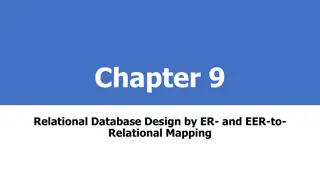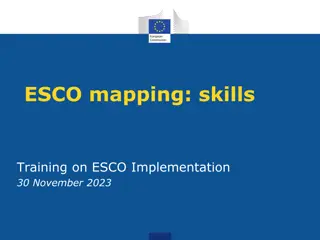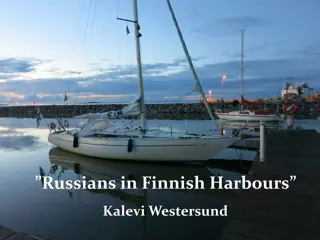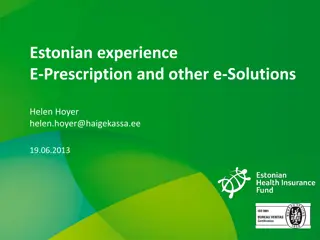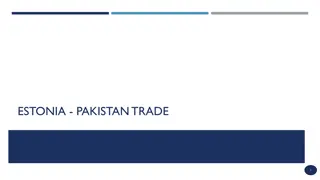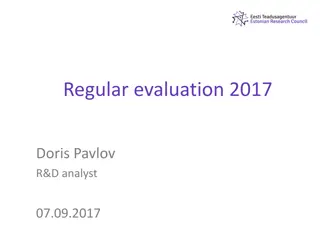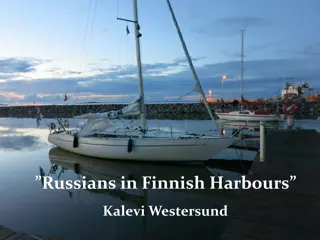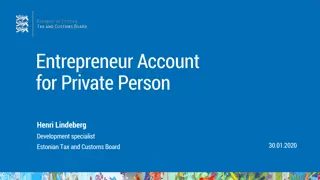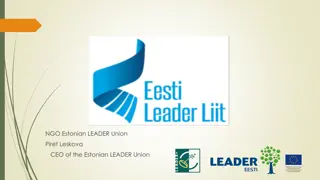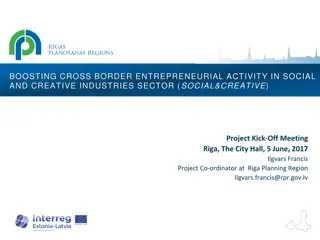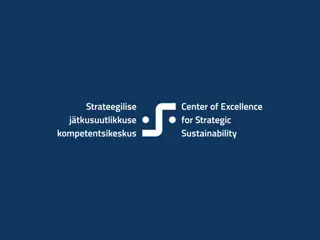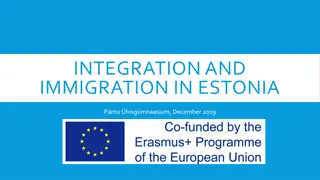
Mapping International Student Networks in Estonia
How international students integrate into Estonian communities, their cultural exchanges, and identity impacts. Research methodology includes interviews, filming, and literature review to understand factors affecting integration. Gain insights into community engagement and adaptation challenges faced by international students in Estonia.
Download Presentation

Please find below an Image/Link to download the presentation.
The content on the website is provided AS IS for your information and personal use only. It may not be sold, licensed, or shared on other websites without obtaining consent from the author. If you encounter any issues during the download, it is possible that the publisher has removed the file from their server.
You are allowed to download the files provided on this website for personal or commercial use, subject to the condition that they are used lawfully. All files are the property of their respective owners.
The content on the website is provided AS IS for your information and personal use only. It may not be sold, licensed, or shared on other websites without obtaining consent from the author.
E N D
Presentation Transcript
Cultural Connections Mapping Networks of International Students in Estonia
Project Members Students: Akemi Hashimura Daniel Christopher Scheibe Joseph Kalu Lynette Kariwo Tinashe Luisa Munemo Venika Krishna Supervisor: Maliheh Keshmiri
Problems International students often find it challenging to integrate into the local environment when they first arrive. How international students find their community and adapt the new life in Estonia is not well known.
Project Goals To understand: How the international students find their own community in Estonia How are they accepted by local communities
How do international students from diverse backgrounds engage with communities in Estonia, and how does this experience impact their sense of identity and cultural exchange within Estonian society? Research questions What are the factors affecting the integration of international students into Estonian local communities?
Methodology 01 02 03 Semi-structured interview & Filming Online Literature review questionnaire
Literature review 01 - All the articles delve on the fact that researching data requires a methodology and stressed over the importance of forming cultural communities. Overall, the articles revealed that: the use of Social networks, leisure activities & cross cultural networking can bring communities together - - Students can also produce and share content that represents their cultural experiences and opinions - networks are often formed by students with co-nationality. In a scenario where the majority of international students are from a specific country, minority groups cluster together. - Social networks and the digital journeys of international students can have real impacts on the students in their capacity to navigate both in their academic worlds and everyday lives abroad
Questionnaire 02 We created a questionnaire with Google Forms, recruited participants from online media such as WhatsApp, Facebook and Telegram and sent them the questionnaire. We had a total of 51 responses from university students in Tallinn and Tartu.
Questionnaire 02 Key findings 1. Most respondents had positive experiences engaging with communities in Estonia, they ve made friends and have been more culturally aware, through a small fraction felt excluded. 2. Key challenges international students face include language barriers, lack of communities, expensive and limited events, and difficulties connecting with Estonian students. 3. Online platforms were seen as crucial for finding events, though some content is only in Estonian. 4. Participating in communities has helped broaden their horizons about Estonia.
Interview & Filming 03 Selected event: Weekly Beerpong tournament in the Bar Gruuv Method: Six semi-structured qualitative interviews with pre-selected questions Participants: Five Erasmus students and one Estonian student co- organizing the event Material: Audio recorder, smartphone camera, document with interview guide Shooting: 17.04.2024 from 18.30-21.30 in Gruuv
Interview & Filming 03 1. Various communites have emerged from the weekly Beerpong tournament 2. The communities consist mainly of Erasmus students who use the tournament as a regular event that keeps the community together 3. The participants emphasize the importance of the first ESN events, which form the foundation of the current community. At the same time, they also say that the community has changed over the last few months 4. In contrast to university courses, the Beerpong tournament is used as a place for interaction between international students and Estonians
Interview & Filming 03 LIFE-Project.mp4 Link to the movie
Conclusions Online platforms are commonly used to find upcoming events. ESN network is one of the helpful communities to bridge international students and local students. Participating in one event can lead to finding another new contacts and events.
Suggestions 1 Use online platform to find events 2 Let s attend one event anyway! 3 You will be able to find new connections :)
Suggestions It turned out that there are not many active communities targeting international students in Estonia. We need a wide range of new activities and events in order to provide international students more options which fit a variety of students cultural background and their interest.
Limitations The data collection period was from March to April. We focused on communities and events whose main participants were students in this project. However, most international students come to Estonia at the end of August and January. Future studies should broaden the scope of target communities not to limited to students communities. We didn t access for events being held only during new semester seasons.
List of Article Sources Chang, S., Gomes, C., Platt, M., Trumpour, S., McKay, D., & Alzougool, B. (2022). Mapping the contours of digital journeys: A study of international students social networks in Australian higher education. Higher Education Research & Development, 41(6), 1821-1837. https://doi.org/10.1080/07294360.2021.1962812 Mogesnes, K. (2014) Henry Jenkins, Sam Ford & Joshua Green: Spreadable media: Creating Value and meaning in A Networked Culture, New York: New York University Press. 2013. MedieKultur Journal of media and communication research, 30(56), 191-194. https://doi.org/10.7146/mediekultur.v30i56.1605 Stodolska, M. (2007) Ethnic enclosure, social networks, and leisure behaviour of immigrants from Korea, Mexico, and Poland, Leisure/Loisir, 31(1), 277-324. https://doi.org/10.1080/14927713.2007.9651382 Taha N & Cox A (2016) International students' networks: a case study in a UK university. Studies in Higher Education, 41(1), 182-198. https://doi.org/10.1080/03075079.2014.927851 Wang, X., Alauddin, M., Zafar, A, U., Zhang, Q., Ahsan, T., & Barua, Z. (2023). WeChat Moments Among International Students: Building Guanxi Networks in China. Journal of Global Information Technology Management, 26(1), 47-76. https://doi.org/10.1080/1097198X.2023.2166752
Link to our portfolio https://docs.google.com/document/d/1oyXiRGE7bF93IUmrjCDe MOGo1YyoQPg8g5RXa98CquQ/edit?usp=sharing
Thank you for listening!

